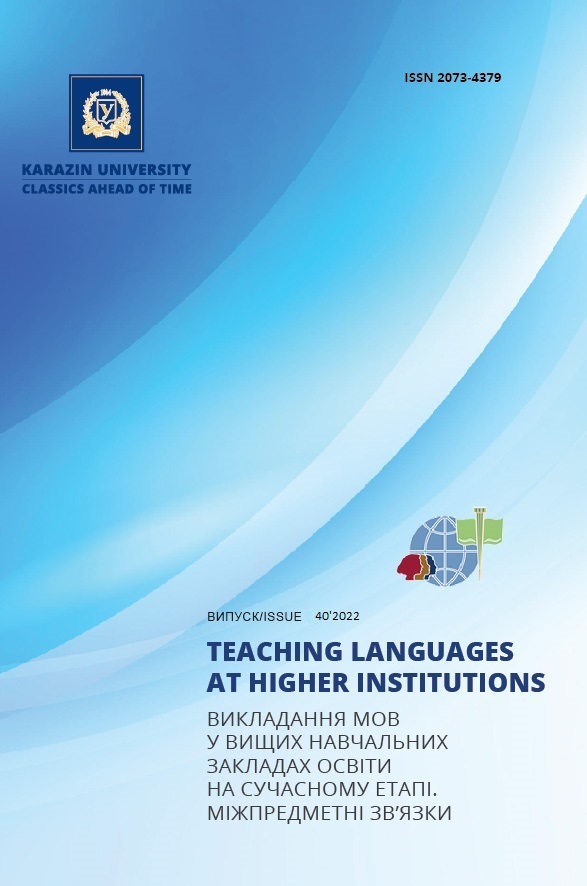Customization mode in foreign language learning
Abstract
The article deals with the issue of accommodating individual differences among learners of English as a foreign language in the same classroom. It is widely acknowledged that there are many problematic issues when it comes to teaching learners with the same learning objectives but different abilities, interests, prior knowledge, learning styles, motivation, etc. There is a lot of research on how to instruct students with a completely different range of learning preferences. A widely held view is that a teacher working in a heterogeneous class should differentiate instruction across content, process, and product within whole-class interaction, group work, team project, and pair work. The article has offered one suggestion related to the implementation of a differentiated instruction strategy in heterogeneous classes. It is a customization mode as a self-regulated learning strategy that calls for the learner’s ability and readiness to actively tailor learning according to individual specifications. With differentiation, teachers differentiate how students learn, while with customization, students customize their learning so that it best suits their requirements and capabilities. In practice, customization mode means providing students with optional tasks and adjustable activities to choose from assignments or lesson plans prescribed by the curriculum. In this paper, the author provides practical examples of affordable strategies to implement customization modes in academic settings.
The article presents findings from a qualitative study investigating students' learning autonomy within a regular course of English for Academic Purposes at Kharkiv I. P. Kotlyarevsky National University of Arts as well as the author's reflection on her own teaching experience. Findings indicate that the customization mode leads to greater success in the academic performance of foreign language learners since it 1) promotes autonomy in learning by motivating students to make decisions about their learning; 2) keeps learners satisfied and elevated by allowing them the freedom to experiment; 3) establishes positive attitude to learning by caring about individual differences; 4) supports uniqueness by enabling learners to express their own identity and bring multiple insights into a classroom.
The paper tries to put some recommendations together for further consideration while designing a learner-autonomous English for Academic Purposes syllabus.
Downloads
References
Anishhenko, I. (2016). Orhanizatsiia samostiinoi roboty studentiv vyshchoho pedahohichnoho zakladu pry vyvchenni kursu “inozemna mova profesiinoho spriamuvannia” [Organization of the students’ self-study activities in a higher pedagogical institution in the process of studying the course “Professionally oriented foreign language”]. Naukovi zapysky Natsionalnoho universytetu “Ostrozka akademiia”. Seriia “Filolohichna” [Scientific proceedings of Ostroh Academy National University: Philology Series]. Ostrog: Vydavnytstvo Natsionalnoho universytetu “Ostrozka akademiia”, 60, pp. 89–91 [in Ukrainian].
Klymenova, O. (2018). Trends of development of modern education: the basic principles of andragogy in teaching foreign languages. Mizhnarodna naukovo-praktichna konferentsiya “Aktualni problemy suchasnykh linhvistychnykh doslidzhen ta zastosuvannia innovatsiinykh tekhnolohii vykladannia mov u vyshchii shkoli nefilolohichnoho profiliu” [International scientific conference “Current problems of modern linguistic research and application of innovative technologies of language teaching in higher school of non-philological profile“]. Dnipro: DDUVS, pp. 86–90 [in English].
Tsvid-Grom, O., Nosenko, M., Rieznik, V. and Bonkovskyi, O. (2021). Organization of self-study in distance learning of foreign languages in higher educational institutions. Teaching languages at higher educational establishments at the present stage. Intersubject relations. Kharkiv: V.N. Karazin Kharkiv National University, 38, pp. 236–250 [in Ukrainian]. DOI: https://doi.org/10.26565/2073-4379-2021-38-15.
Benson, P. (2013). Teaching and Researching: Autonomy in Language Learning. London, Routledge [in English]. DOI: https://doi.org/10.4324/9781315833767.
Tomlinson, Carol Ann and Imbeau, Marcia B. (2010). Leading and Managing a Differentiated Classroom. ASCD. Alexandria, Virginia USA [in English].
Francis, R. Jones. (2003). Self-instructed foreign language learning. An annotated Bibliography. Definitions and concepts. University of Newcastle upon Tyne [in English].
Delisle, James R. (2015). Differentiation Doesn’t Work. January 06, 2015 [in English].
Little, D.G. (1991). Learner Autonomy 1: Definitions, Issues and Problems. Dublin: Authentik Language Learning Resources [in English].
Weimer, M. (2013). Adding choice to assignment options: a few course design considerations. Faculty Focus. Higher ED teaching strategies from Magna Publications. The Teaching Professor. 27.1 [in English]
Perspectives on the Future of Flexible Education. (2009). Internal Report. Institute of Teaching and Learning, Deakin University, Australia. December 2009 [in English].
Barry, J. Zimmerman. (2010). Becoming a self-regulated learner: an overview. Theory into practice. College of education. The Okio State University. Vol. 41, 2, pp. 64-70 [in English]. DOI: https://doi.org/10.1207/s15430421tip4102_2.

